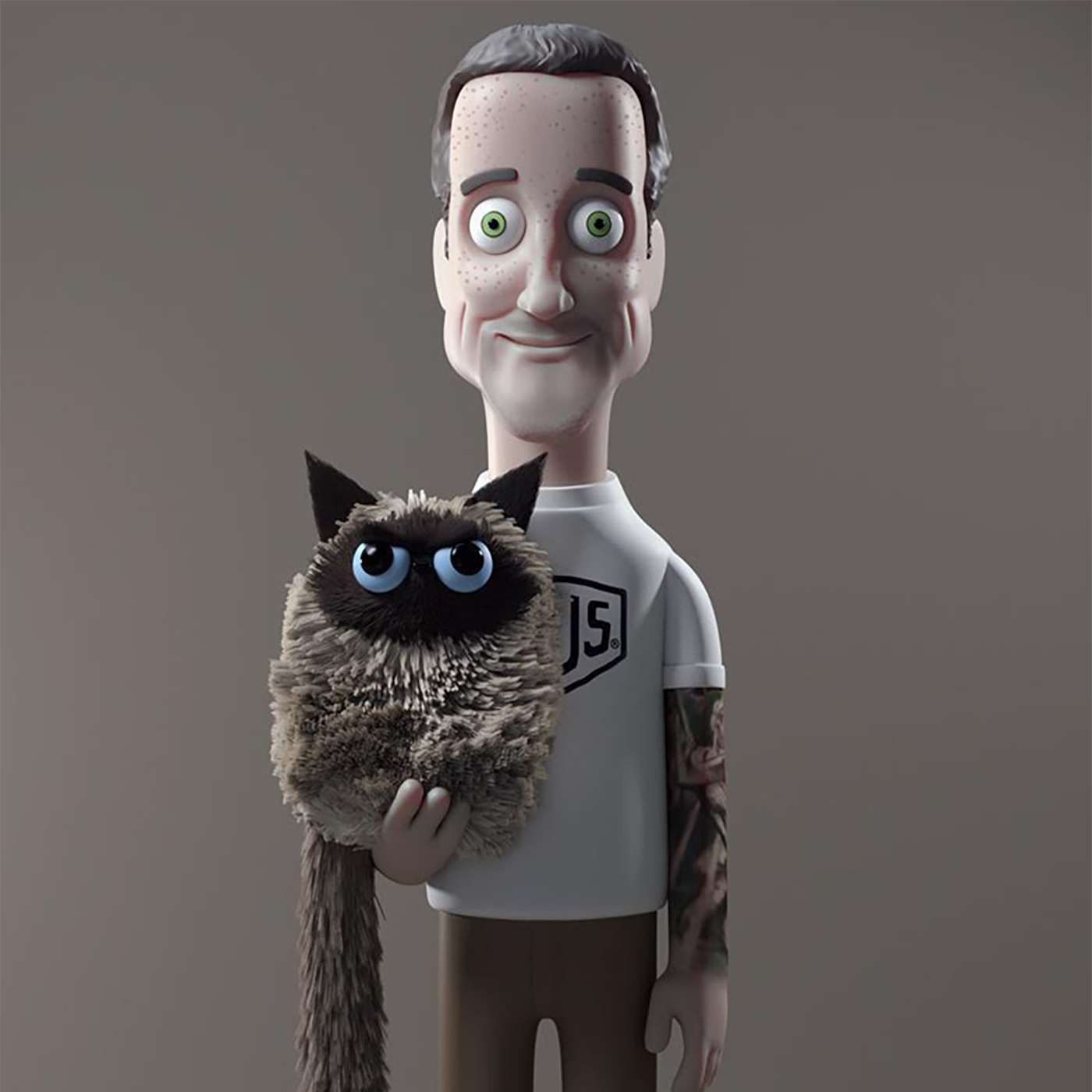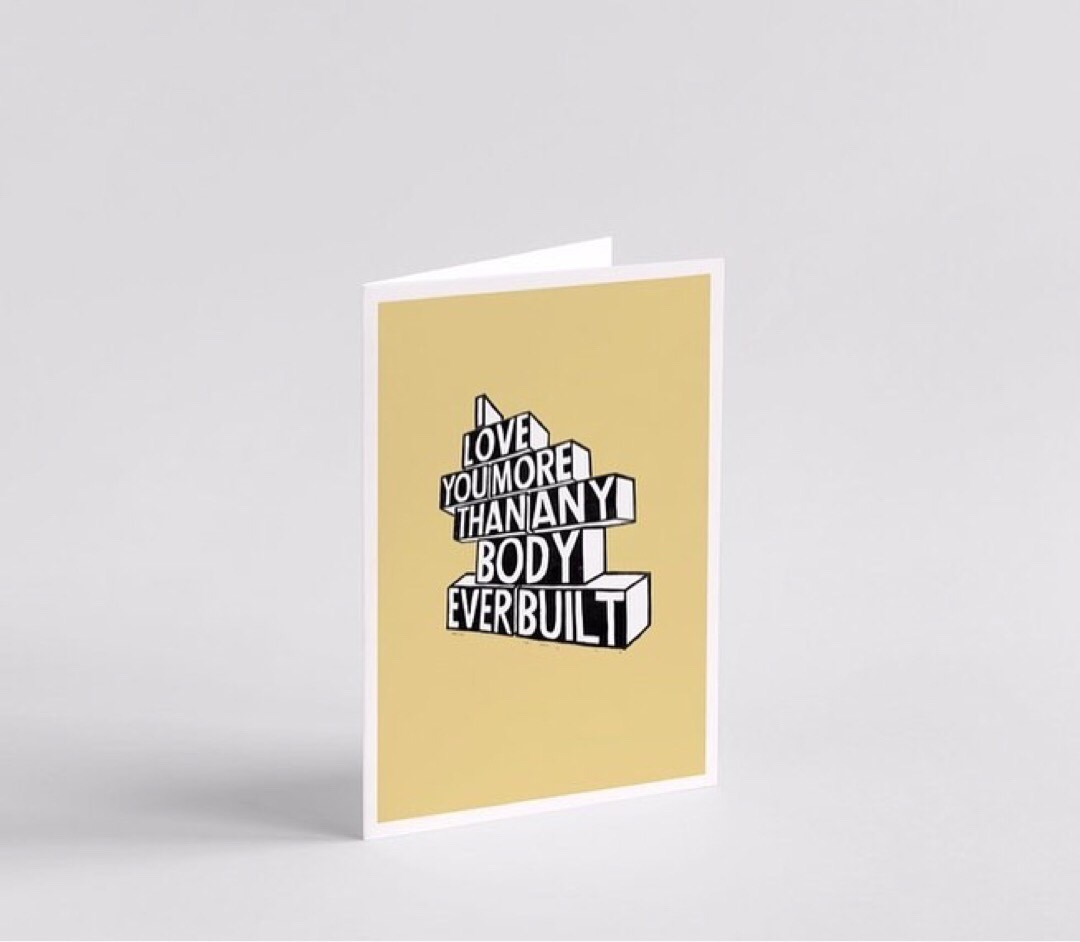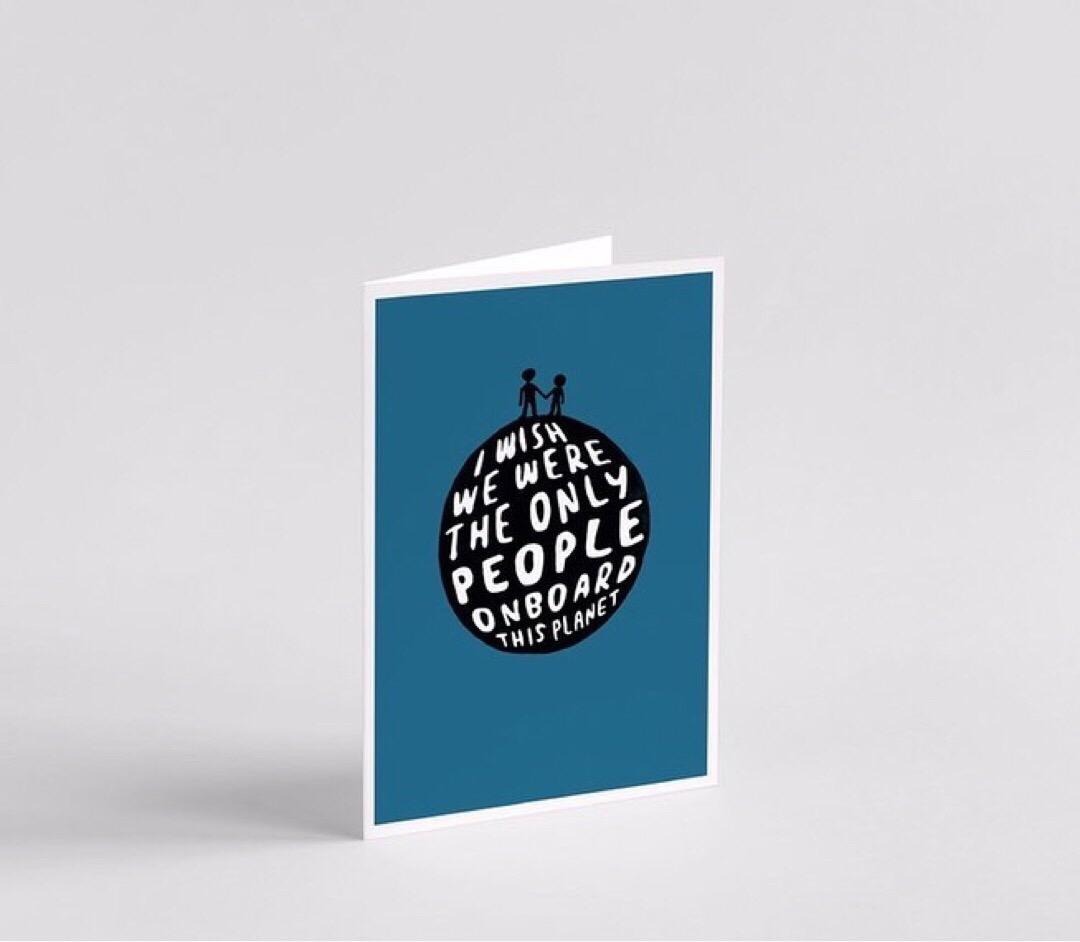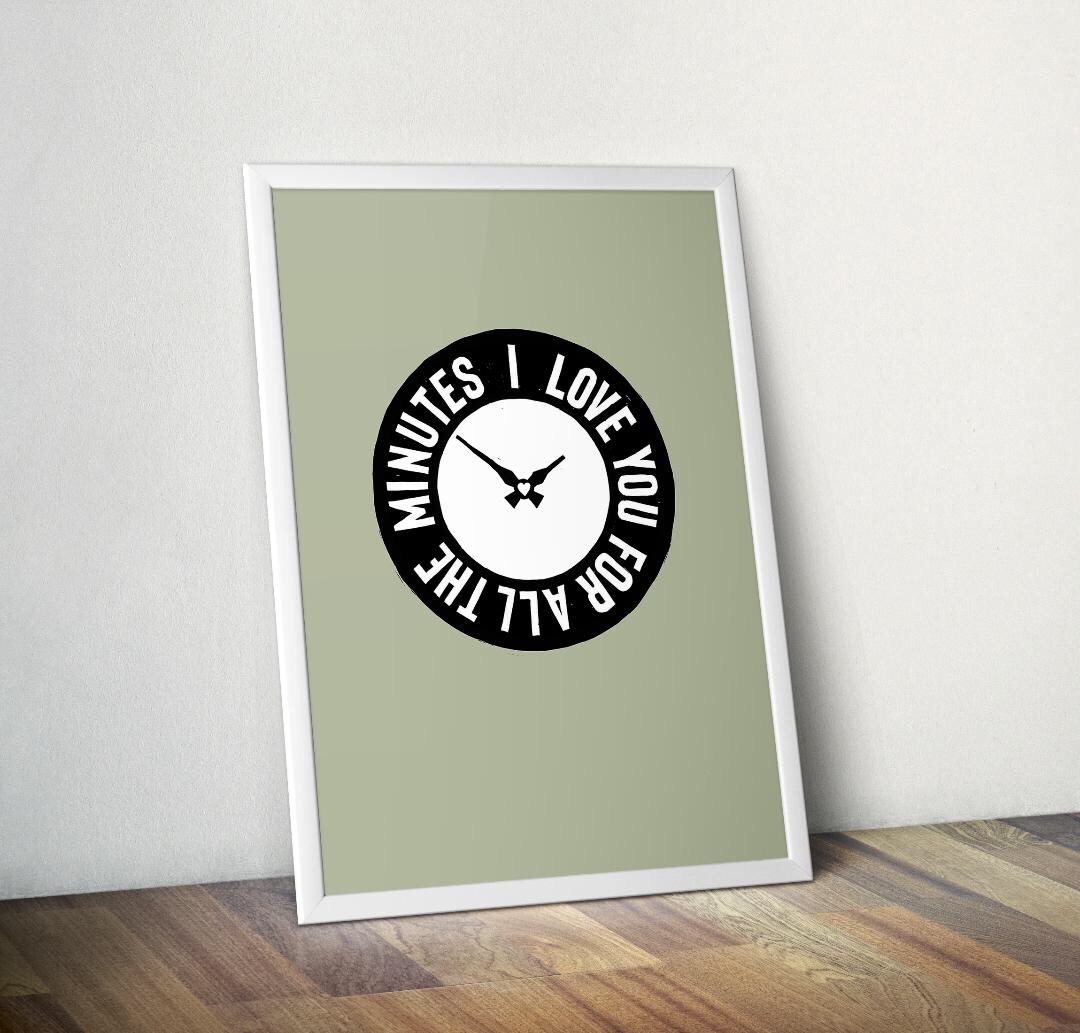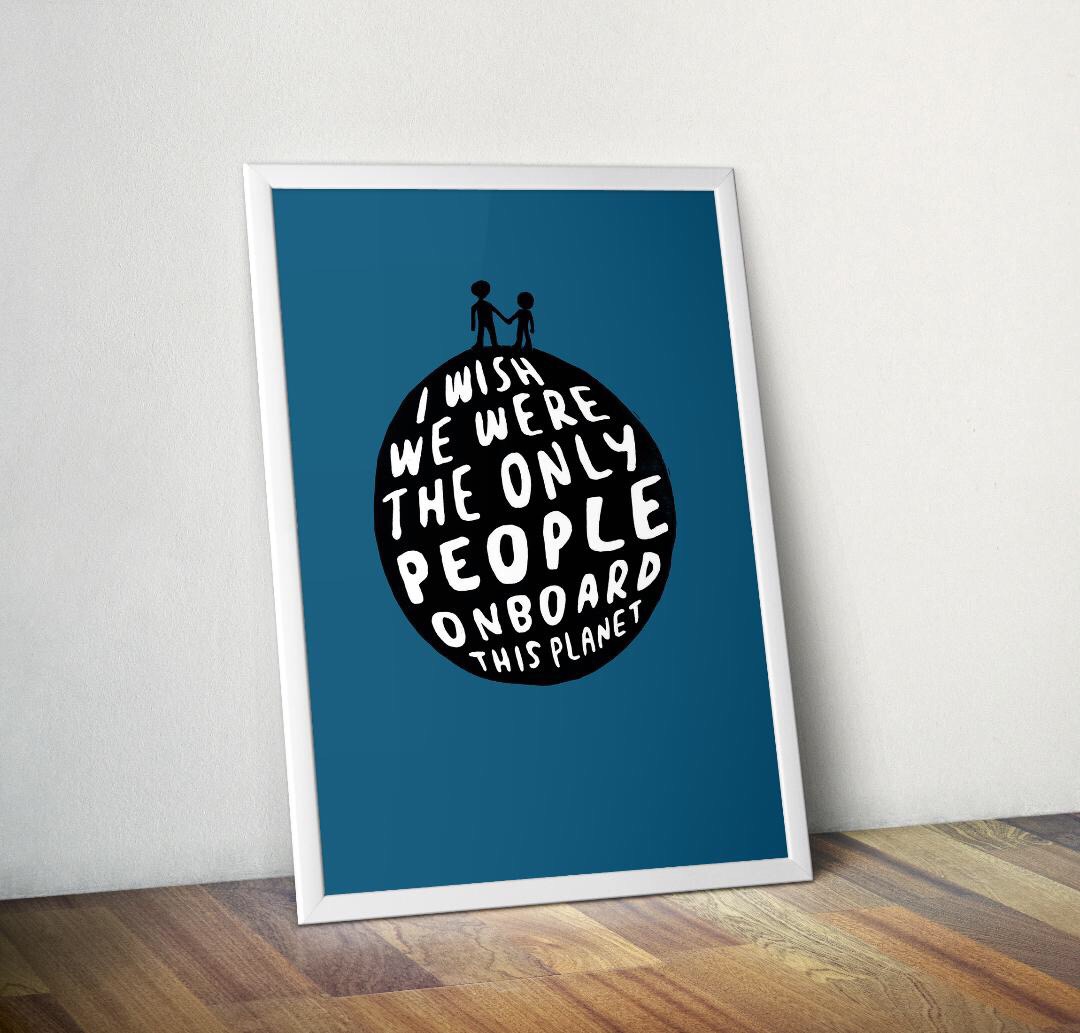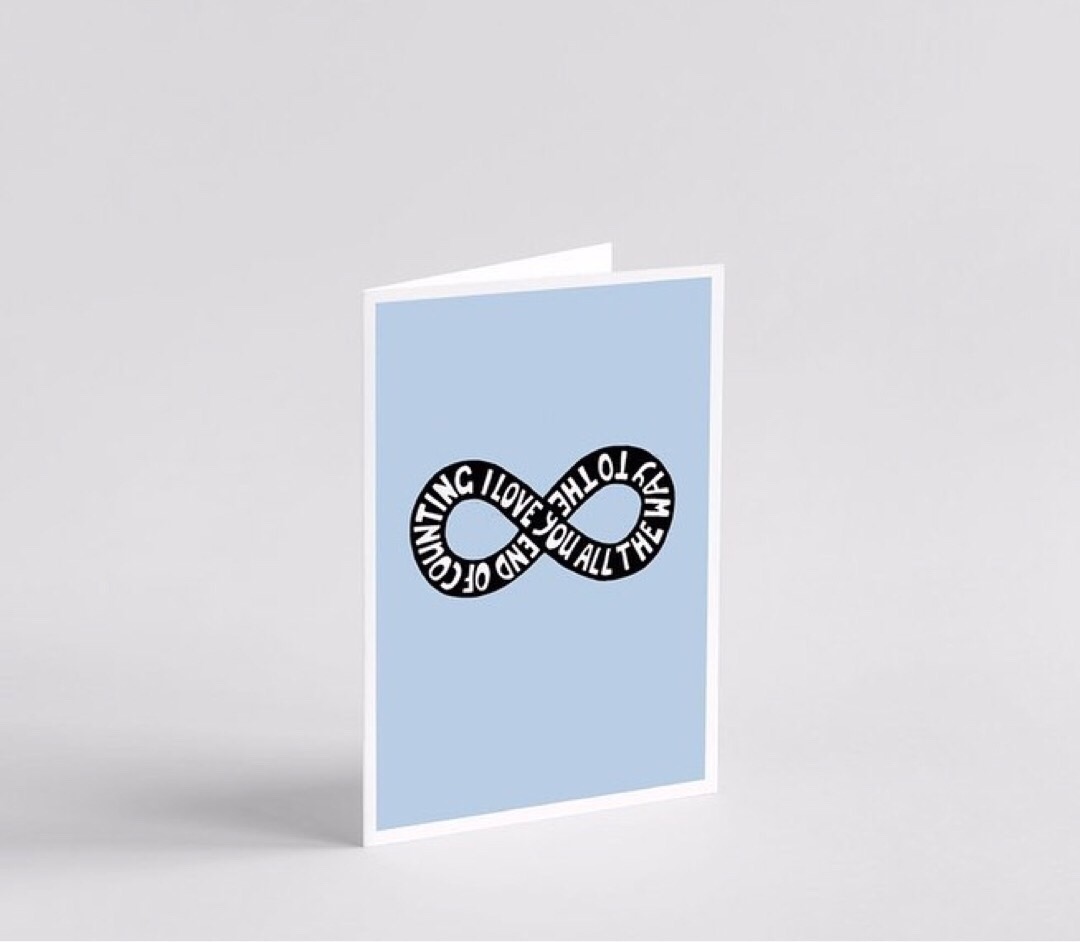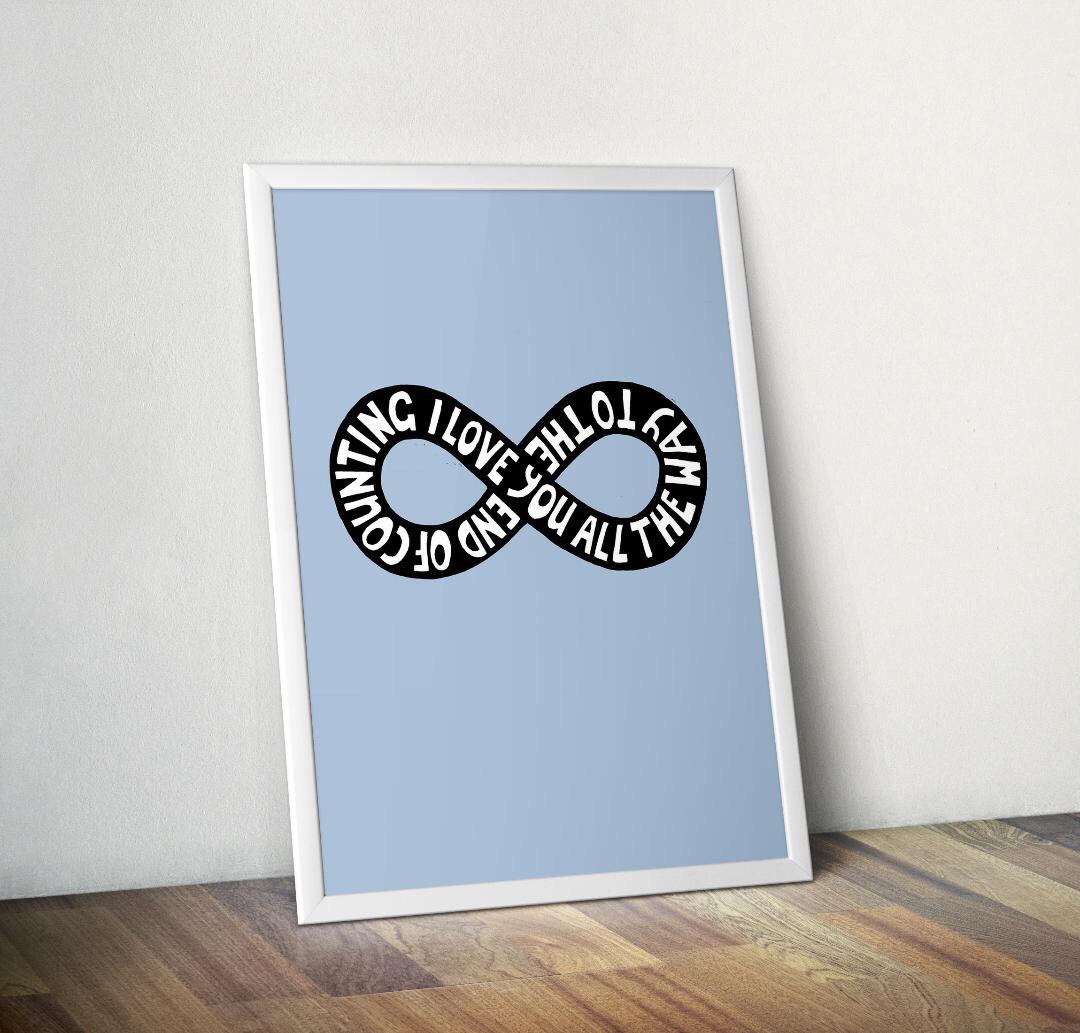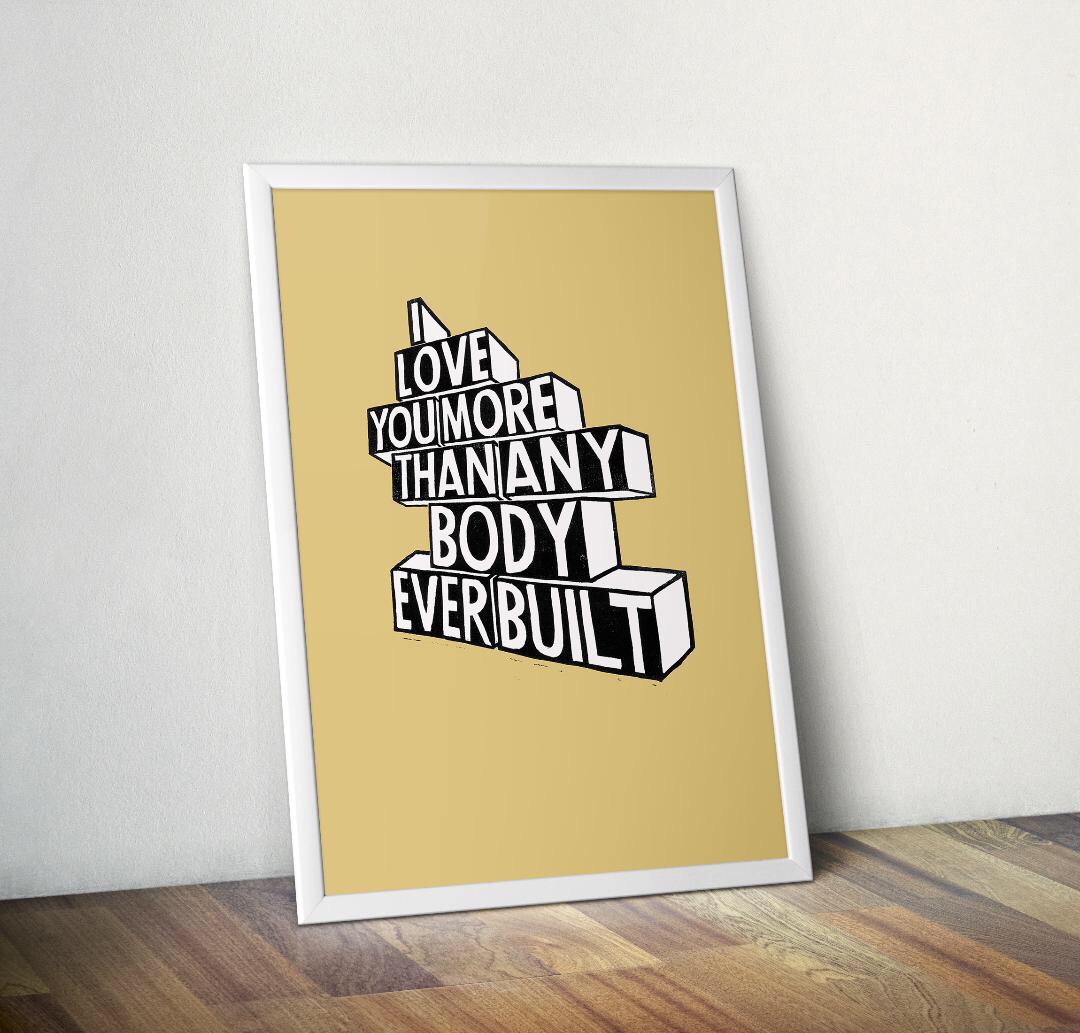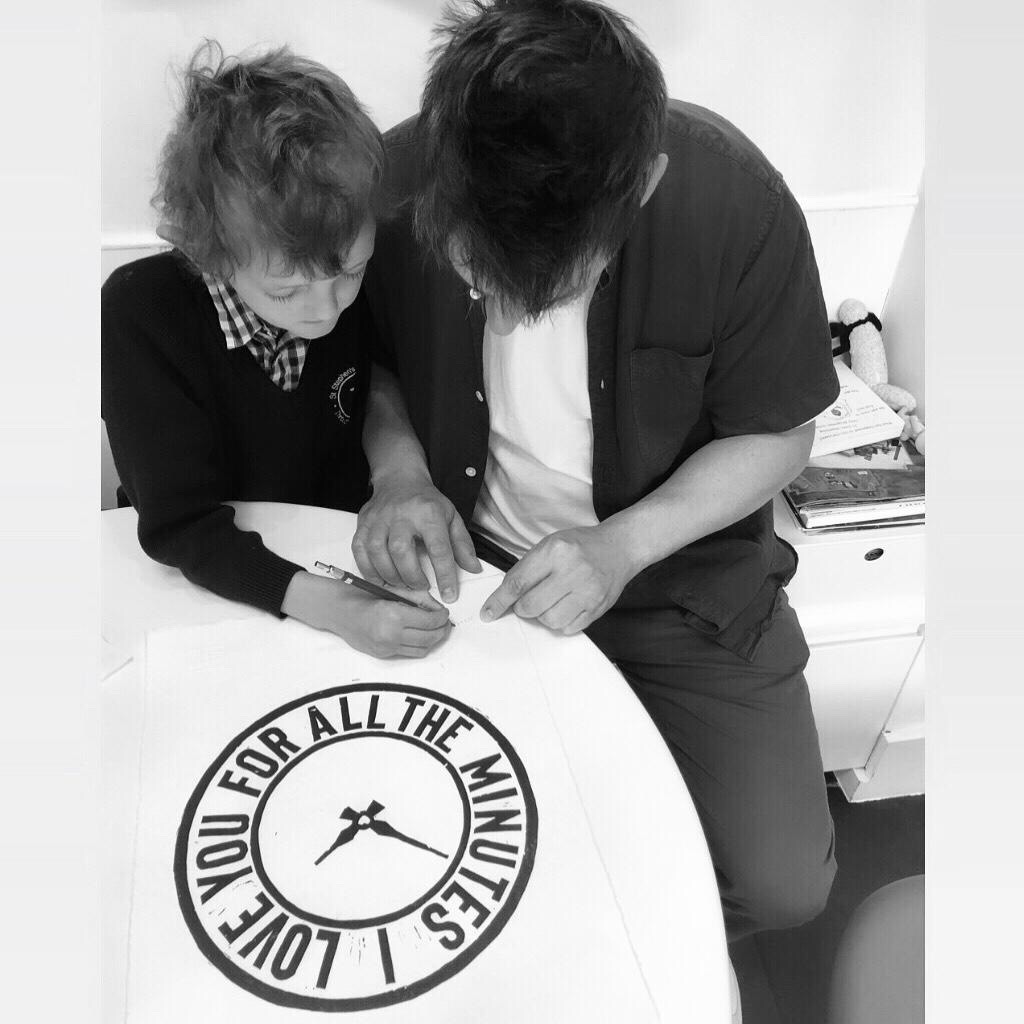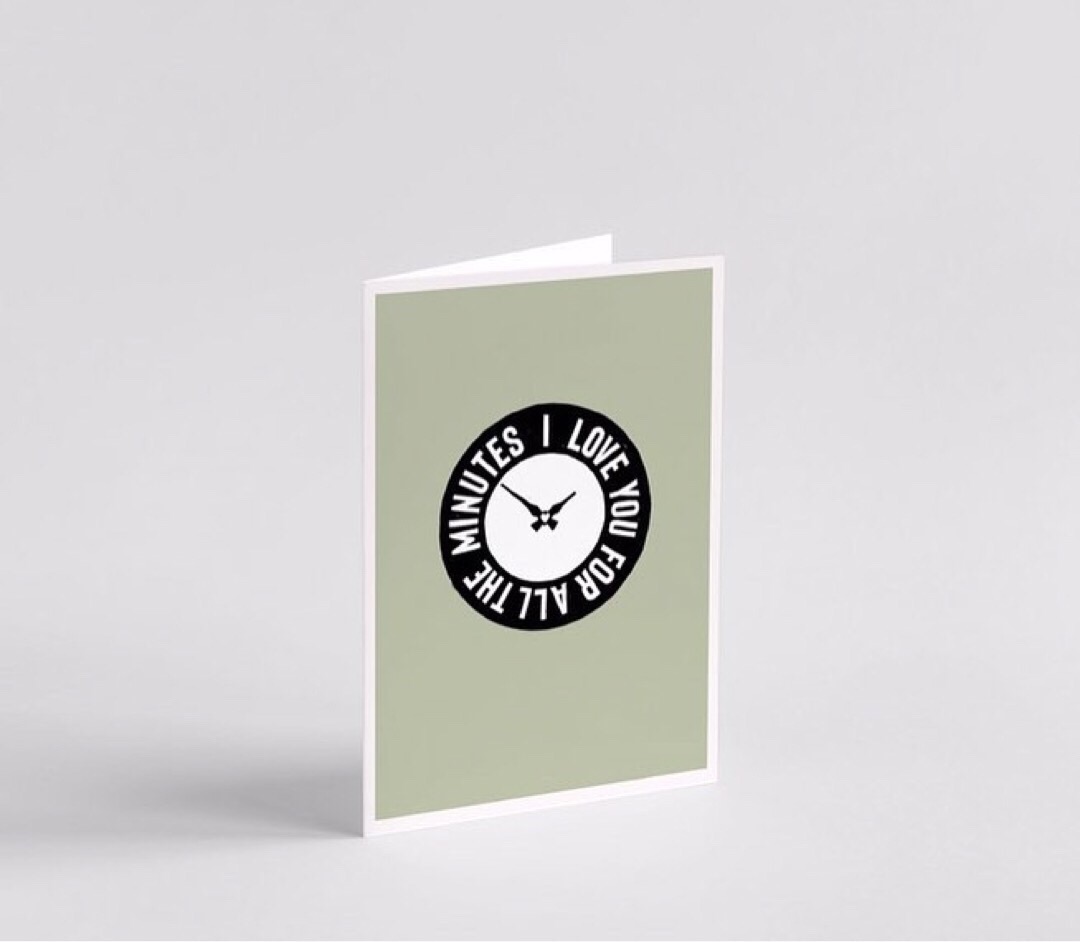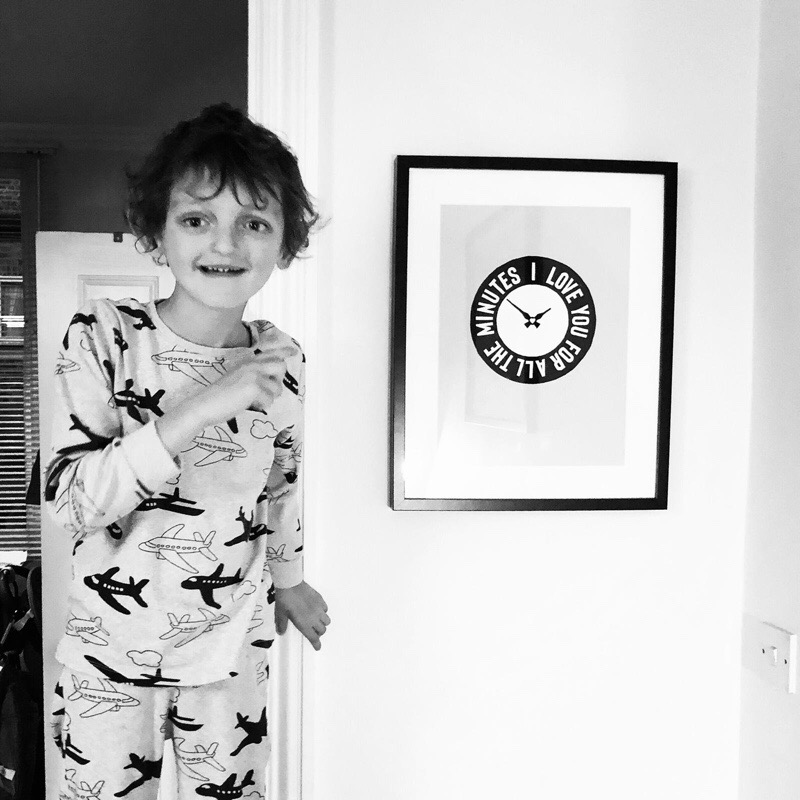Month: October 2019
New things that haven’t made ads better, part 1: treatments.
This whole series is going to be based on the incontrovertible truth that ads aren’t as good as they used to be. You might not agree with this. If so, watch the best ads of twenty years ago, then the best ads of today.
I assume you now agree.
If memory serves, back in those days there was no such thing as a formal treatment from a director. You’d just look through some umatics to check out someone who might be good for the job, maybe narrow the list to two or three, then meet them for a chat.
That chat was something of a two-way street, where the creative team would feel out the director and vice versa. Afterwards you’d all have a good idea of whether or not you’d want to work together, so you’d award the job, hope the director liked you as much as you liked him or her, and go and make a commercial message on behalf of a person or corporation..
Some time in the early 2000s the treatment was added to the process.
Treatments, or some sort of expanded version of the director’s vision laid out on pages, or as a Keynote presentation, existed before then, but they weren’t essential. Some directors used them to work out their process, then shared some or all of it with the creative team. Others just went to the pub and scribbled their ‘vision’ on the back of some beer mats.
I believe the first instance of using a treatment to win a job was the big-ass document Tarsem produced to convince BBH to allow him to direct this:
Although that was made in 1992, Tarsem’s extra effort might inadvertently have kicked off an arms race from which there has yet to be a retreat: if Director A offers a big document of photographic references, name-drops of classic DoPs, a page or three of arse-kissing (‘First, I just want to say how much I love this script, yadda yadda yadda‘), and the occasional use of film jargon, such as ‘anamorphic lenses’, then Director B is going to look lazy and uninterested unless they do the same.
A treatment is (supposedly) an indication of intent, but it’s also (supposedly) a demonstration of how much the director wants to do the job, conveying the extent to which they will be inclined to put in extra hours on the set, or call in post-house favours to perfect the CGI, just for you. Most people like having their egos stroked, so it also serves that purpose.
(I think this is the moment to point out that many treatments are not actually written by the director. Instead, the production company employs treatment writers who specialise in making such things look real purty, writing them with evocative élan and sourcing some great images from books about Nan Goldin or Corinne Day. Sometimes they do this with the director, in order to more accurately reflect that all-important vision, but sometimes they just get a recording of the initial meeting and kind of parrot it back to the agency. It might also be worth mentioning that – gasp! – the finished result doesn’t always correlate entirely with the promises in the treatment.)
And now it is de rigueur; an ‘essential’ part of the process, as worthy of a calendar entry as the shoot itself.
But if the ads are now worse than they were in the pre-treatment days (and they most certainly are), why do we now insist on ‘treatment o’clock’, as I heard one CD refer to it?
I know correlation doesn’t mean causation, but perhaps the rise of this extra prep has contributed to the fall in standards. It’s possible that the extra time spent on these documents is time that might otherwise have been spent on more useful endeavours. These could be anything from visiting more locations, meeting more potential DoPs, or having a bath where more and better ideas might arrive.
It might also be the case that committing to much more stuff up front reduces the space for magic to happen on the shoot. Most productions throw up new circumstances that might be incorporated into the ad, but if you’ve already nailed down the finished article (or more of it) the opportunities for spontaneous greatness are reduced.
Third, and I think most important, the treatment is an implicit reduction of trust. It says ‘I know you said some good stuff in the meeting, and we got on like a house on fire, but I need still more indications that you’re not going to fuck this up’. This is never made obvious, but both parties know it’s there, just as they know there’s a good chance the director didn’t write the treatment. Then we all sweep this weirdness under the carpet and pretend everything is above board and no one lied to anyone.
I get that in the past ads sometimes ended up in bad places that you weren’t expecting, and that perhaps a treatment would have prevented that. But perhaps it wouldn’t. Treatments by their nature offer a kind of perfection that is unlikely to be reached, making disappointment a more distinct possibility.
I certainly know of directors who would prefer not to spend the time and money creating a treatment for an ad that fails to win them the job. Just like in Highlander, there can be only one, so two or three treatments are going to be a big waste of resources, adding to the annoyance of failing to get the job. Margins are already tighter than two coats of paint, so adding in an extra (rough estimate) 10% cost to every script (including the waste of the losing treatments on other jobs) is something of a kick in the teeth. They’re essentially a director’s pitch, and all pitches are something of a shot in varying degrees of darkness.
And I think we can be sure that, as with pitches, the ‘best’ doesn’t always win. Jobs get awarded for many other reasons, so a brilliant treatment, expensively produced, might lose out to a more focused budget or a client’s whim.
So maybe we should return to the old days, when a chat and a handshake, with all their attendant implications of connection and trust, were enough to kick off some of the greatest ads of all time.
Or we could just keep adding extra pointless bollocks to the process of making ads, even though it’s clearly no guarantee of better work.
I wonder which would be the better choice…
***** SPECIAL BONUS *****
I asked a production company founder for his POV on this subject.
His response was much more interesting than my post…
I think “the Client” has a role to play in all of this. ‘Back then’ – as you say – it was a question of sifting through some tapes and doing some meetings. As an account man I would go to the Client and say ‘this is your script, and this (shoving the u-mat into the machine) is the bloke (always a bloke back then) who’s going to direct it’. Okay. Not always quite that straight-forward. But the Client rarely needed to be ‘sold’ the Director – unless it was someone (a) without a reel (see your note on Tarsem) or (b) someone really, really expensive. The Client simply bought into the ‘mystery’ of production. More on that in a minute….
You are right. Tarsem lit the fuse. But why did it take 8 years between his three hour pitch to Larry & Rooney and ‘the early 2000s’ to become A Thing? Partly because Tarsem HAD to pitch that hard. He had two things on his reel – an REM promo and some MTV idents. That was it. He was up against Mike Seresin (old-school brilliance) and Steve Lowe (hotter than hot wunderkind). So he HAD to pull a rabbit out of the hat. I was at Garretts (‘Ministry of Film’), Blink and Stark in the ‘90s. Not a treatment in sight. So Tarsem’s treatment was a false dawn. The big guys simply didn’t have to work that hard to get a gig. The agency didn’t press them. And the client didn’t know any better. Vaughan & Anthea were pretty revolutionary with their filmed ‘conversation’ which was sent across to the agency. But words? Few and far between. And pictures? How are we even going to do that in a pre-computer, pre-www age anyway?
Actually – looking back – I think the pressure came from other places. TV – where ‘Sizzles’ ruled the roost – had some influence. Brett Forracker (where is he now I wonder?) had the backing of 4Creative and did some cracking treatments. And some of the more computer-savvy directors – who knew how to combine words and pictures (‘Wow! What even IS that?!’ ‘Um – it’s called a Word Doc’) led the way. And then – of course – the curve was exponential.
What started as a competitive edge that helped the Prod Co win business became the albatross around its neck. Agencies couldn’t award a job without seeing a treatment (the bigger, the bolder, the better). And then of course the Client (who had remained pretty oblivious to all this up until now) was dragged in. Agencies started using director’s treatments to help sell in scripts. And then we heard that one agency was researching treatments to see which one found most favour. Yikes!
So the whole deal was ramped up. And out-sourced. RSA begat a slew of in-house ‘visual researchers’ who traded on their experience and took it into the freelance market. Then people realised that it wasn’t enough for the Director to explain what it was he wanted to do with a script. Blow me – he had to entertain whilst he did it! A few gags, a heart-warming intro – some writing craft. The birth of treatment ‘writers’. And the whole cottage industry exploded.
Treatments got more and more lavish. And theatre was employed (Ringan’s ‘Sainsbury WW1 Christmas ad’ was delivered to AMV in a battered despatches briefcase straight from the Western Front in 1914 – or so it appeared…). And guess what – we heard comments like ‘well the meeting was hopeless…but the treatment was stunning, so we gave him / her the job’…..Well what a surprise.
So now Clients wouldn’t even look at a Director unless there was a treatment. And wouldn’t chose between directors (‘we recommend this guy (or girl…now), but either of these other two could do a good job…’) unless they can compare treatments.
And of course the more people see them – the more the words and images stick. So when the finished film turns up – and there’s no shot of the sad looking boy on a bike in the rain (“But I LOVED that image!”) it’s a bit of a let down for some.
As you rightly say – it become prescriptive. We’re going to tell you what we’re going to shoot – and how we’re going to shoot it – before we’ve visited the location, built the set, cast the talent etc etc etc. Would Nick Kamen’s image (or anyone like him?) have appeared in a treatment for Laundrette? Doubt it. And would the Client have bought that image? (he was definitely a swarthy, ‘bad’ boy vs the WASPish clean-cut American image the Client was expecting). Doubt it. So Nick might never have been called to the Casting Session. Etc etc.
Again – as you rightly say – film-making is like chemistry. The end results might surprise and delight. But there’s a degree of risk. It might all go tits up. And no one wants (or can afford that). So the treatment is a sense-check. A Risk Assessment. A due-diligence process that tells everyone they’ve made the right decision. If it goes wrong now, no one can accuse us of not being responsible in the process.
Could Directors be doing other stuff? Not sure I agree with that – the time is being spent pitching on the job and that (hopefully) will pay dividends if and when the director wins the job (thinking about sets, cast etc). But are they too long? Almost always – a Facebook treatment went in last year at over 200 pages…. Are they too expensive? Almost always – but who’s going to turn up in a Cortina when the other guy’s in a Merc? And do they stand scrutiny? Well let’s put it this way – I’ve yet to hear of agencies having a ‘creative wash-up’ after the job. Sure – there’s a ‘financial wash-up’ to see where the money went. But a post-match analysis to compare what they were promised vs what was delivered? Nah. Nobody wants to do that….
If I ruled the world two things would happen.
1. Clients should pay the pitching but losing Prod Cos. Nothing evil – £1000 each would do. But if the Client demands to see the treatment then the ‘pitch’ should be a line in the budget – unless of course the Client says they’re happy to award without sight of a treatment (never gong to happen of course).
2. Agencies should be prescriptive about the length of treatments. ‘5 pages and that’s it – you can send in a sixth but we won’t read it’. And why not do this? The most depressing thing to watch is ECDs on your shoot reading treatments for their next shoot on shitty phones on your set – swiping page after page after page. What a waste of everyone’s time and effort.
I’ll leave you with two stories. Neither of which are about treatments. Both of which are about trust. And both – weirdly – involve VW. Tony Kaye did the PPM for God Bless The Child. When it came to the ‘Director’s input’ in the meeting Tony bent over in his chair and put his head in his hands “I p-p-promise” he whispered “to d-d-deliver you the b-b-b-best VW commercial you’ve ever h-h-h-had”. And that was it. Didn’t do too bad a job, did he?
And I read on Dave Dye’s blog that Frank Budgen – when it can to the ‘Locations’ part of a VW PPM opened a file in front of him, took some images out ad held them close to his chest. He looked at each one in what was a silent room, put them back in the file and said quietly ‘“yep – I’m happy with those”. Brilliant.
Life was a bit more fun when there was a bit less certainty and a bit more trust in the process I think….
I just took a DNA test, turns out I’m 100% that bitch. Even when I’m crying crazy. Yeah, I got boy problems, that’s the weekend.
ITIAPTWC Episode 57 – Rob McFaul of Purpose Disruptors

Rob McFaul is the founder of an organisation called Purpose Disruptors:
A network of advertising insiders whose goal is to create a visible, large scale, bottom up movement within the industry, that will act in solidarity to meaningfully tackle climate change.
I’m very, very interested in this subject. It’s both immensely interesting and immensely intractable. In some ways it’s the ultimate brief.
Have a listen and dip your toe in the waters of capitalist hypocrisy, corporate morality, regenerative leadership, universal stardust, and much else. (Or maybe your toes are already in. Maybe you’re up to your eyeballs. Have a listen anyway.)
If you’re interested in getting further involved, email me at bwmkay@gmail.com, or contact Rob via Purpose Disruptors.
Here’s the iTunes link, the Soundcloud link, and the direct player:
Fun, anyone?
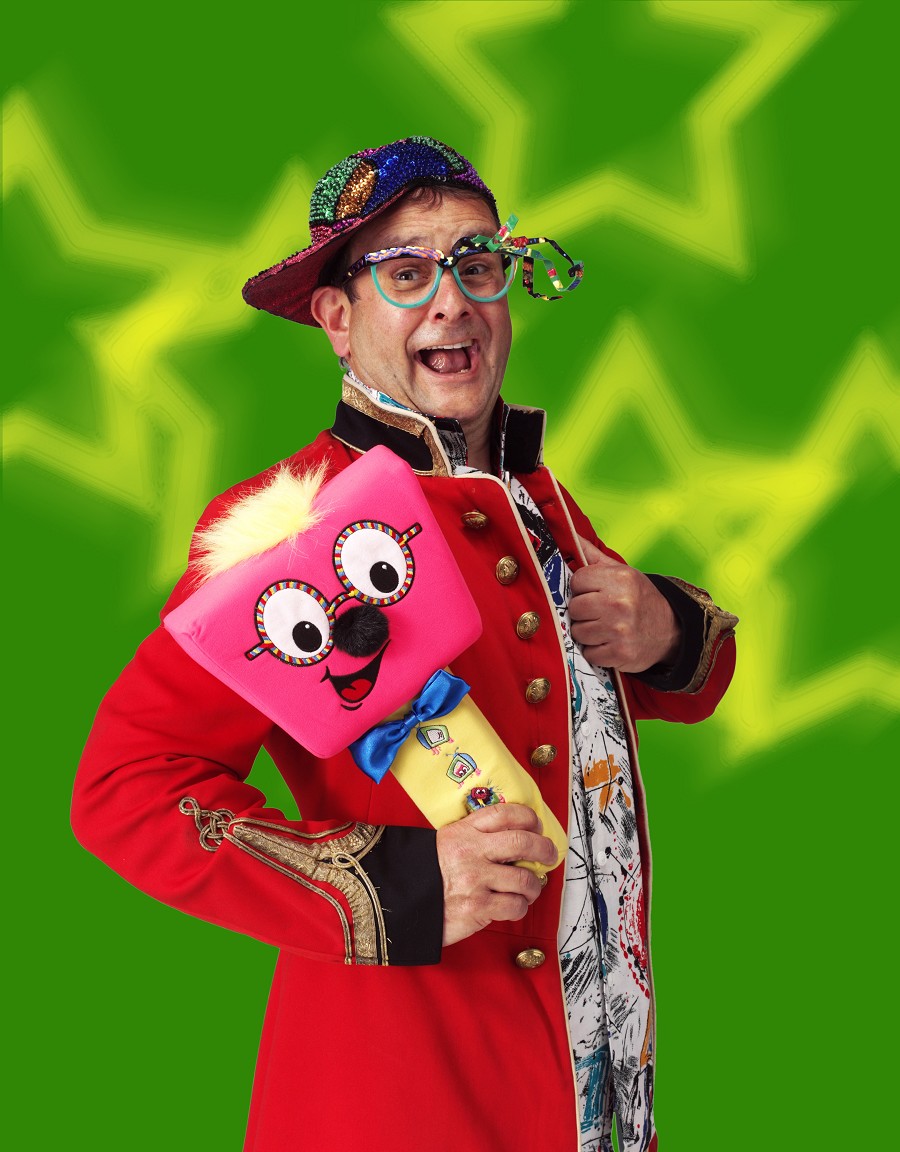
“
Run, run rabbit run
Dig that hole, forget the sun
And when at last the work is done
Don’t sit down, it’s time to dig another one – Breathe, Pink Floyd.
“When you come from Italy, you have to realise that football is more like a job, like work from 9-5. You have to get one point, or you have to get three points. I sort of lost the feeling of what football is all about. It’s a game, you’ve got to have fun.” – Dennis Bergkamp.
“Does anyone remember laughter?” – Robert Plant.
In addition, somewhere near the end of this excellent chat between Tim Bell and David Abbott, Mr. Abbott extols the virtues of having fun in advertising.
If you’re not persuaded by Pink, Dennis, Robert or David, can I please make the case for enjoying your job a bit more than you currently do?
The odd thing is, I don’t think anyone disagrees with that as an idea. Why would anyone not want to have fun? The problem comes when you don’t feel you can give yourself permission to enjoy yourself.
It may be a cliché, but every advertising generation seems to think that the one before it was the last to have a good time, and they’ve sadly turned up just as the party has become a depressing mess of empty beer cans and three final stragglers asleep on the stairs. But even today, with you possibly believing the opposite, the truth is that the job is intrinsically much more fun than literally 99% of other jobs.
Let’s have a look at some of the reasons why:
- You can wear what you want. Beyond that, you can even dress ‘creatively’ and it will be generally accepted. I once worked with an ECD who wore a cape, a witchfinder’s hat and toeless socks with sandals. He earned well over $500,000 a year. Have you seen what bus drivers have to wear? Or Burger King chefs? The good news is, you don’t have to dress like them, but you can if you want to, and that’s fun.
- Part of your job requires you to do all the fun things people like to do when they’re not working. Reading magazines, watching movies, visiting art galleries… These are all essential pastimes for an advertising creative. Some enterprising people even find a way to charge that stuff back to the client, or add it to their tax deductions. Which brings us to…
- Expenses. I don’t know how generous your agency or government is, but if you think most jobs can get media entertainment for free, or tax-free, you are sadly mistaken. Over the years my job has allowed me to acquire video games, coffee table books and even the odd coffee table. That was more fun than paying full price for all that jazz. From time to time you even get the chance to load up on shoot-loot, then fill your office with groovy junk. Somewhere in my garage I have a special can of Pepsi that cost $200 to make.
- Creative advertising is one of the best and easiest ways to meet interesting people. It might be an expert in a field related to your brief, a stunt person on a film set, or countless directors, producers, editors, engineers, designers, photographers etc. Then there’s the celebrities: over my career I’ve met all sorts of them, from Posh Spice and Terence Stamp to Isaac Hayes and Thierry Henry. Every single time I did that it was fun, fun, fun.
- I guess some of the travel might be dull (I’ve been to Slough and Reading far too many times), but you should have a decent chance of being able to swing a free trip to another country, something most people have to pay a lot of money for, and – ugh– fucking organise. And they might not even get to go business class! Maybe it’s a shoot in Prague, a factory tour in France, or a conference in Miami. Often you will be accompanied by a person who pays for the drinks. Drink those drinks. Wake up with a hangover. Eat a big free breakfast. Get in a car driven by someone else. Spend the day sitting in front of a video monitor while people offer to get you coffee. By far the funnest way to deal with a headache and dehydration.
- Production is fun. Choosing photographers, directors, illustrators, VO artists etc. that you would otherwise never interact with is fun. Then asking them to do stuff that you don’t have to pay for is fun. And if you don’t like it you can ask for more stuff. That’s also fun! Sometimes.
- Seeing your stuff for real is fun. Driving past your billboard is fun. Seeing your stuff on TV is fun. Hell, even seeing your stuff online might even be fun, especially if you’ve invented a game. Games are fun!
- Coming up with ads is fun. Yes, I know it’s a bit of a grind when you have to write boring lines or do the umpteenth reversioning of something shit, but on the whole, being paid to think up things other people might enjoy can be FUN. You might not see it that way because you’ve had to do it so many times, but take a step back and look what you get asked to do for actual money. I repeat: it’s more fun than literally 99% of jobs.
So maybe you’ll have more fun if you look at your day through the lens of how much fun it could contain. Or look at how you can squeeze some fun out of situations you previously considered to be funless. Sure, you can grumble about your lot if you want, and we all do that from time to time, but come on… most of the time it can be pretty darn fun.
And you, you can be mean. And I, I’ll drink all the time. ‘Cause we’re lovers, and that is a fact. Yes we’re lovers, and that is the weekend.
Wood-ism
My friend Sonny Adjoran, ex-AMV, now a CD at Engine, has created a fantastic project with his high-functioning autistic son, Woody.
Wood-ism is a collaboration between Woody’s remarkable mind and his dad’s artistic skills, turning some of Woody’s unique and wonderful phrases into a series of cards and linocut prints.
Buy here. Profits from sales go to Ambitious About Autism.
And here’s Woody visiting the poster gallery to see his work on display:
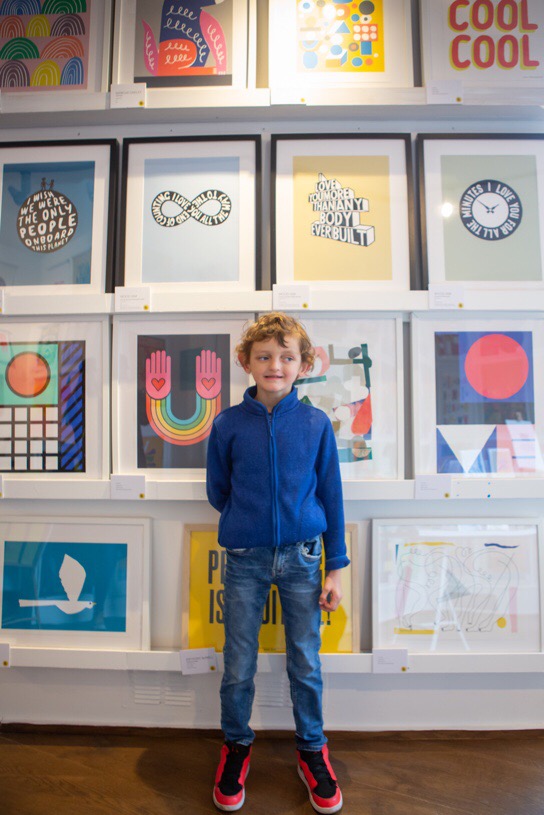
Nice one guys.
More on Instagram at Woodism_ink
Got a good story?
Ever since I started in advertising I’ve found that it lends itself to some great stories. Maybe the valve salesmen, newsagents and accountants are similarly blessed, but I somehow doubt it.
Proximity to celebrities, foreign travel, big budgets, smart and funny people… Combine those elements and you often have tales worthy of repeating on a blog, even fifteen years after they happened.
I’ve heard quite a few, but there are plenty that must have passed me by, so I’m going to give you one of mine, and hopefully that will inspire you to give me one of yours…
In the middle of 2005 my agency, AMV BBDO, was working on the campaign for Make Poverty History. Mary Wear wrote the line, Paul Belford art directed it, and the rest of us came up with some nice little bits and pieces on the side.
Daryl and I created a poster for the Long Walk To Justice that then became the security lanyard for everyone at the Scottish leg of Live 8. It was worn by none other than George Clooney, the Proclaimers and the great Natasha Bedingfield. But that wasn’t the best bit.

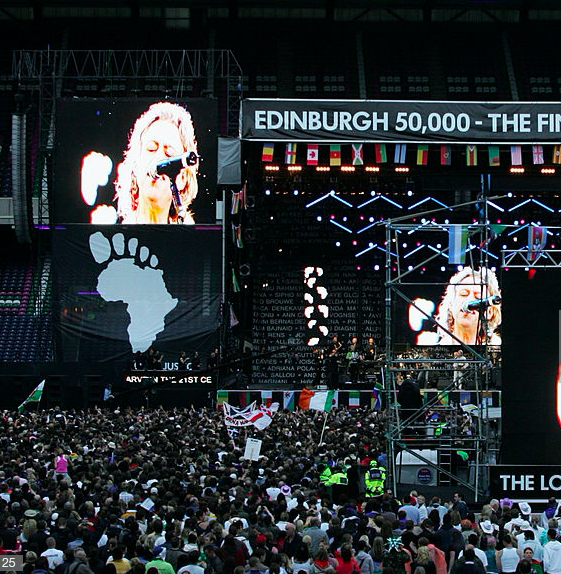
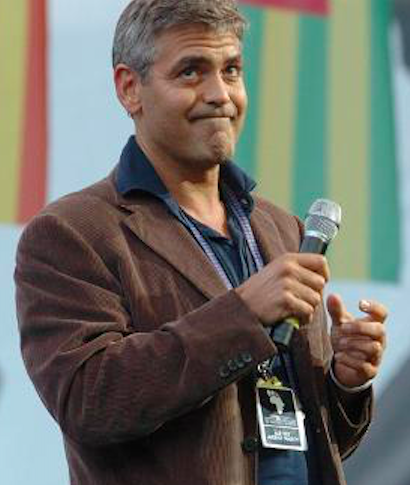
A week or two before the concert our boss Peter Souter invited us along to the Portobello offices of the event’s primary driver, Richard Curtis. Ten or fifteen of us, seemingly selected at random, were seated on sofas around a coffee table.
“Right,” said Richard. “What we have to do today is work out the last song that will be sung at Live 8.”
Daryl and I looked at each other, checking that we’d both heard the same thing: we were to be among the people who might choose what Paul McCartney, The Who and Madonna would be singing at Hyde park in front of maybe a billion people.
Cool.
Images of all those 1985 pop stars belting out ‘Do They Know It’s Christmas’ at Wembley flashed before our eyes. In those non-war times, when none of us privileged white dudes were likely to become the next Mandela or Gandhi, this was probably the easiest path we could take to shaping some tangential semblance of ‘history’.
Now, I know what you’re thinking: ‘I’d have chosen X, and that would have been the best and greatest choice, and that would be easy peasy’. Well, far be it from me to disabuse you of your hubris, but there were a few parameters that only appeared when it was time to shoot down a suggestion:
How about Heroes by David Bowie? Great vibe and message, but no one knows the words beyond ‘We could be heroes, just for one day’.
All You Need Is Love? That’s a Lennon song. You can’t ask McCartney to sing a Lennon song.
A re-do of Do They Know It’s Christmas? Come on. It’s happening in July.
I don’t remember anyone actually suggesting the winning number, but the afternoon was definitely one of those moments where I had no regrets about the career I’d chosen.
Thanks, Peter and Richard.
If you want to know the final choice, it was a Macca-friendly tune that anyone could sing along to ad infinitum:
Your move, blog reader…
I’m living’ in that 21st century. Doing something mean to it. Do it better than anybody you ever seen do it. Screams from the haters, got a nice ring to it. I guess every superhero need the weekend.
Commando The Musical (thanks, A):
From Nothing To Something:
Meditation’s what you need
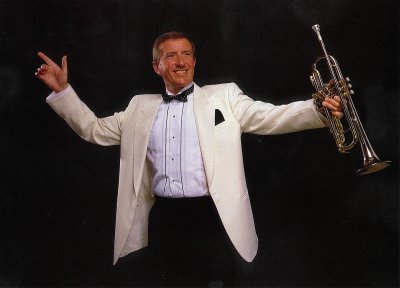
About five years ago my wife bought me a Transcendental Meditation course for my birthday. I went down to a little house in Beverly Hills and spent about an hour a day for four days learning the practice.
Since then I’ve meditated for twenty minutes every day. I used to do it twice a day, but now I only do it in the mornings, after I brush my teeth, lying in bed with my cat on my chest.
Lots of very creative people, from the Beatles to Oprah Winfrey, practice TM, and David Lynch has even set up a foundation to promote it in schools and the armed forces (lots of info about that and TM in general can be found here).
Describing how it works and how it makes you feel is kind of tricky, but the TM people put it like this: your mind is like an ocean, and your normal consciousness is like the waves on the top: occasionally choppy and immediately subject to the positivity and negativity of external forces. But then there’s your deep consciousness, like the still infinity of the deep ocean. Things don’t really move around so much in that great vastness, so spending time down there is very calming and refreshing for your mental state. The practice is effortless and the sensation is remarkably pleasant.
If you’re prone to getting angry, stressed or anxious you might want to give TM a go. You might also find that tapping into that subconscious tranquility could help to reveal new layers of your creativity.
It worked for the Beatles and Mr. Lynch (and Paula Abdul). Why not see what it can do for you?
Archives
